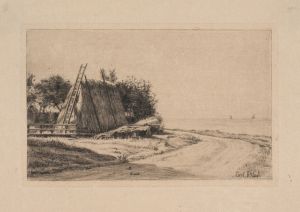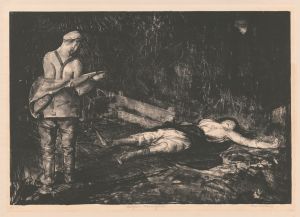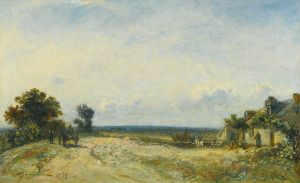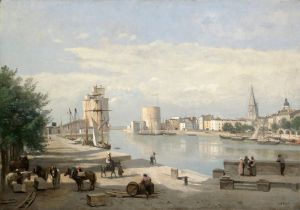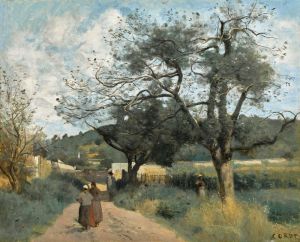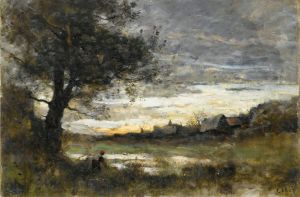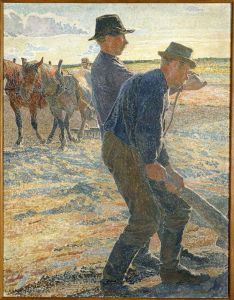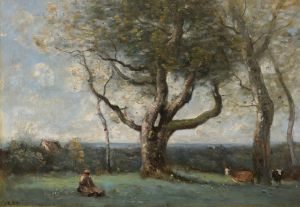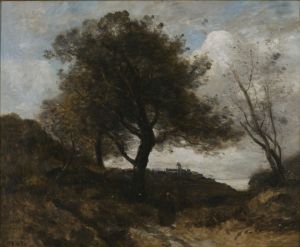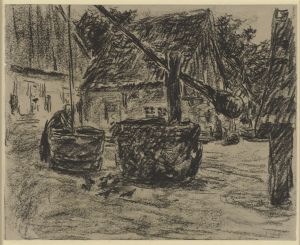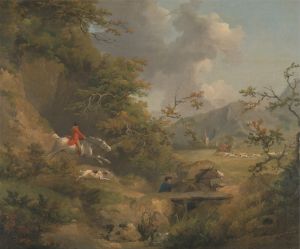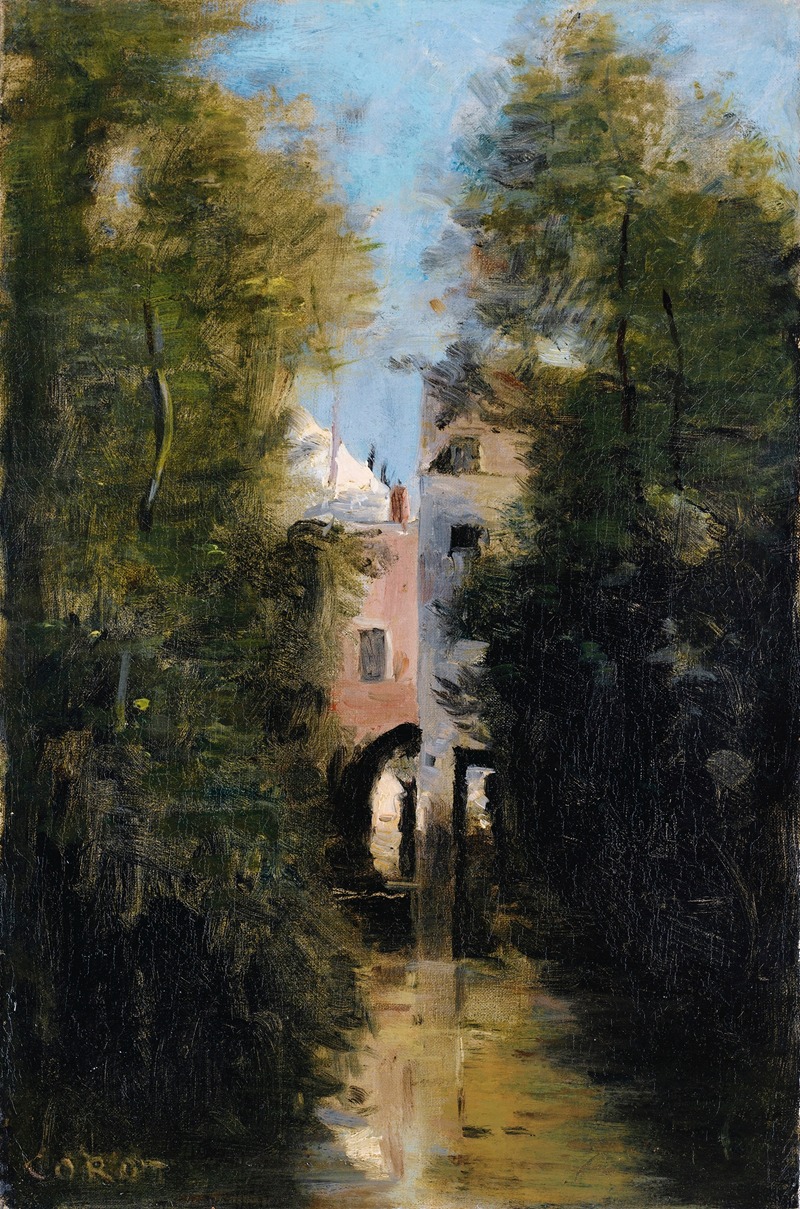
The Windmill On The Thérain River In Beauvais
A hand-painted replica of Jean-Baptiste-Camille Corot’s masterpiece The Windmill On The Thérain River In Beauvais, meticulously crafted by professional artists to capture the true essence of the original. Each piece is created with museum-quality canvas and rare mineral pigments, carefully painted by experienced artists with delicate brushstrokes and rich, layered colors to perfectly recreate the texture of the original artwork. Unlike machine-printed reproductions, this hand-painted version brings the painting to life, infused with the artist’s emotions and skill in every stroke. Whether for personal collection or home decoration, it instantly elevates the artistic atmosphere of any space.
Jean-Baptiste-Camille Corot was a pivotal figure in landscape painting during the 19th century, and his work "The Windmill On The Thérain River In Beauvais" is a testament to his mastery of capturing the serene beauty of nature. Corot, born in Paris in 1796, was a leading figure in the Barbizon School, a movement that emphasized naturalism and paved the way for Impressionism. His works are celebrated for their delicate balance between realism and the poetic, often characterized by a soft, atmospheric quality.
"The Windmill On The Thérain River In Beauvais" exemplifies Corot's ability to blend the natural landscape with human elements, creating a harmonious scene that reflects both the tranquility and the subtle dynamism of rural life. The painting depicts a windmill situated along the Thérain River, near the town of Beauvais in northern France. This region, known for its picturesque landscapes, provided Corot with ample inspiration for his plein air studies, which he often used as the basis for his studio paintings.
In this particular work, Corot employs a muted color palette, a hallmark of his style, which lends the scene a timeless and contemplative quality. The soft greens and browns of the landscape are punctuated by the gentle movement of the river, which reflects the sky's light, creating a sense of depth and space. The windmill, a central element in the composition, stands as a testament to human ingenuity and its coexistence with nature. It is depicted with a simplicity that underscores its integration into the surrounding environment, rather than dominating it.
Corot's technique in this painting is indicative of his broader approach to art. He often worked with thin layers of paint, allowing him to build up subtle gradations of tone and light. This method is evident in the way he captures the diffused light of the sky and its interplay with the landscape below. The brushwork is both precise and fluid, contributing to the overall sense of calm and balance.
Throughout his career, Corot was known for his ability to convey mood and atmosphere, and "The Windmill On The Thérain River In Beauvais" is no exception. The painting invites viewers to pause and reflect, offering a glimpse into a world where nature and human presence are in quiet harmony. This quality has made Corot's work enduringly popular, influencing generations of artists who followed.
Corot's influence extended beyond his lifetime, as he became a mentor to many young artists who would later become prominent figures in the Impressionist movement. His emphasis on capturing the transient effects of light and atmosphere can be seen in the works of artists like Claude Monet and Camille Pissarro. "The Windmill On The Thérain River In Beauvais" thus not only represents a specific moment in time and place but also serves as a bridge between the traditions of the past and the innovations of the future.
In summary, Jean-Baptiste-Camille Corot's "The Windmill On The Thérain River In Beauvais" is a masterful example of 19th-century landscape painting. Through its delicate depiction of a rural scene, the painting encapsulates Corot's unique ability to blend realism with a poetic sensibility, leaving a lasting impact on the art world.





